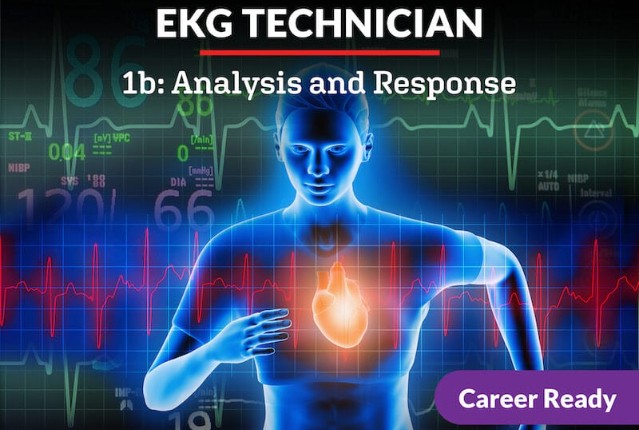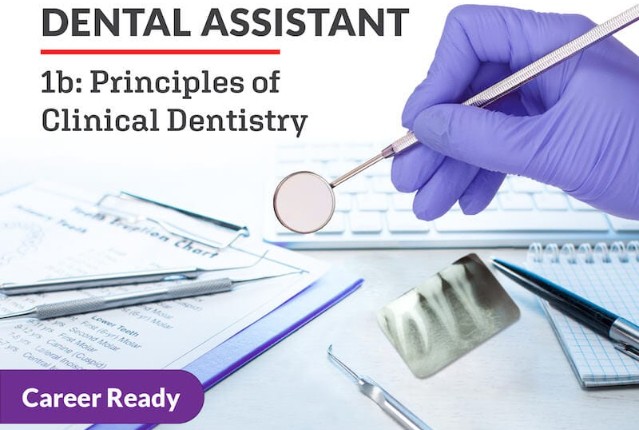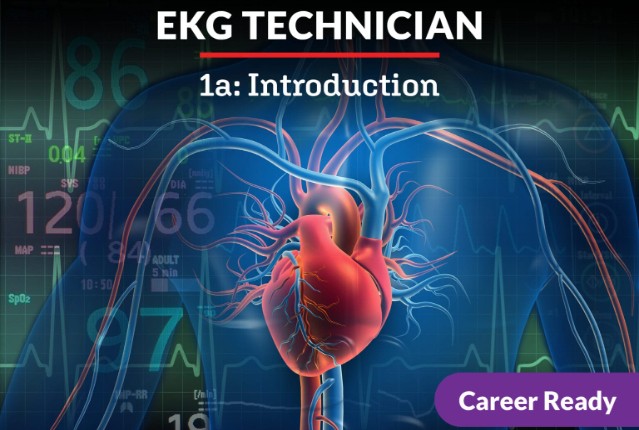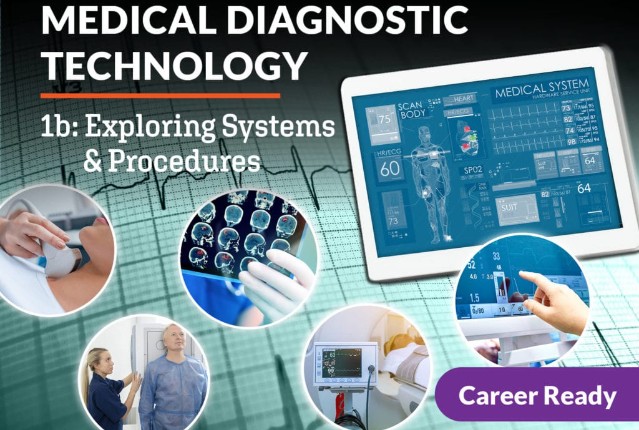
EKG Technician 1b: Analysis and Response
Does the thought of becoming an EKG Technician still make your heart skip a beat? Continue your journey through the peaks and valleys of EKG waves and really dig into the details of the cardiac code to fulfill your ultimate goal: saving lives! This course will prepare you to interpret different EKG waves, how to spot wave abnormalities, how to differentiate between different disorders, and how to treat those disorders. Let’s get ready to continue your adventure into the world of cardiology and a possible career as a EKG Technician!
Review course outlineAccess for a year
USD 299.00*
* Choose more courses to get a discount



